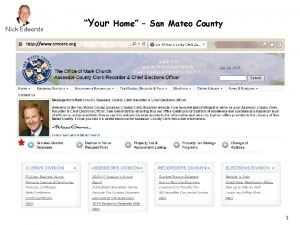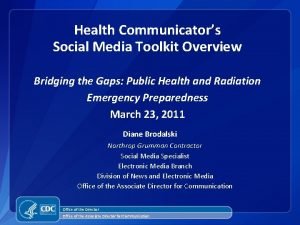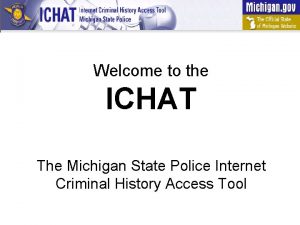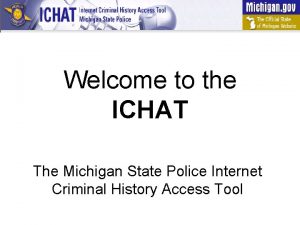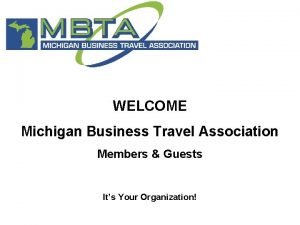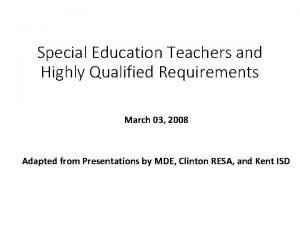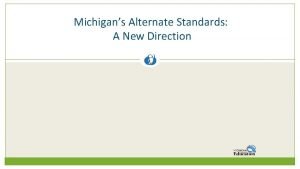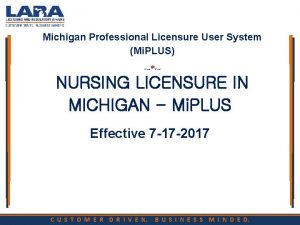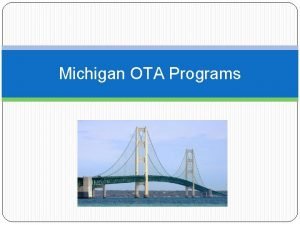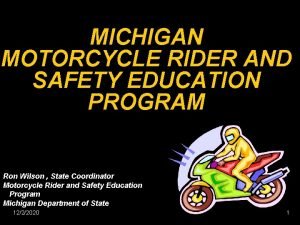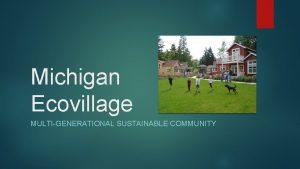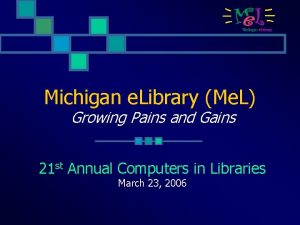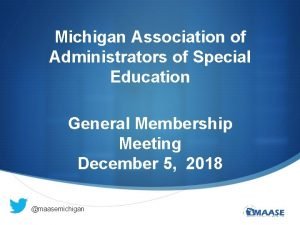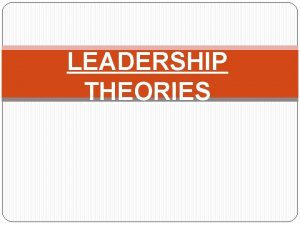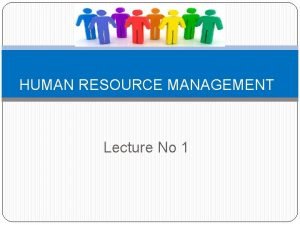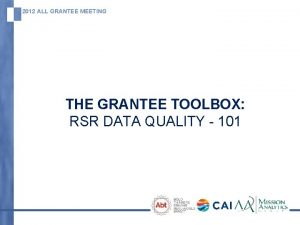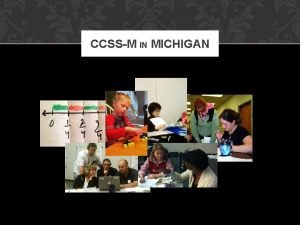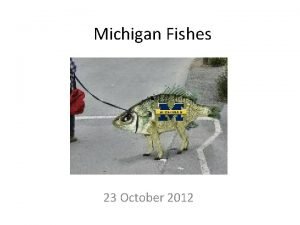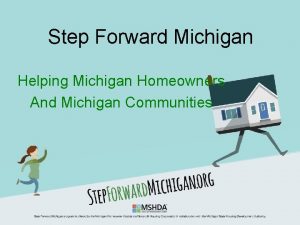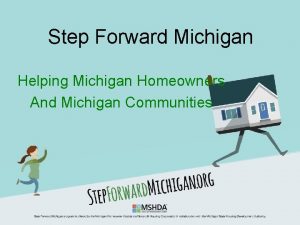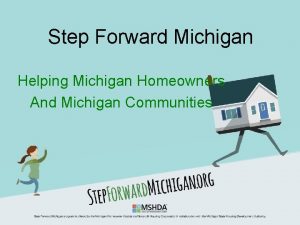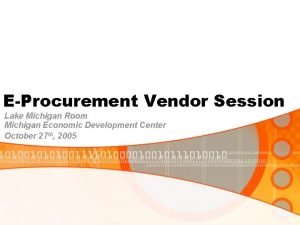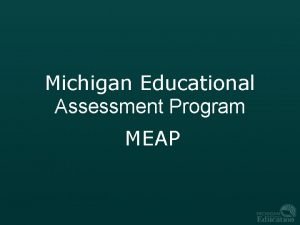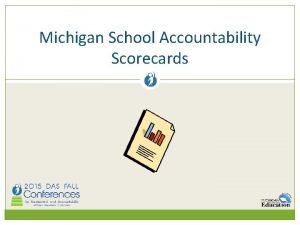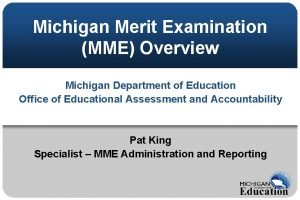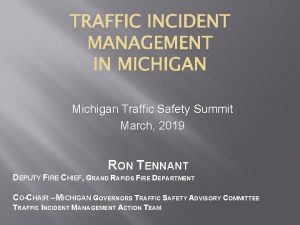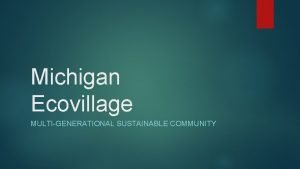WKKF Michigan Grantee Media Toolkit Introduction Media Toolkit


































- Slides: 34

WKKF Michigan Grantee Media Toolkit

Introduction: Media Toolkit Introduction: What is a communications strategy?

Introduction: What is a communications strategy? Communication strategies are plans for communicating information related to a specific issue, event, situation, or audience. They serve as the blueprints for communicating with the public, stakeholders, or even colleagues.

How to develop a communications strategy Determine your organization’s communications goals • Once goals are understood, you can begin to determine how communications can support them.

How to develop a communications strategy Define your communications goals • Know your audience • Where do they stand on issues? What are their likes and dislikes? • Who are they? • How can you motivate them? • What action do you want them to take? • Vote, purchase, change behavior, etc. • Establish a timeline for objectives • Objectives should be manageable based on your organization’s capacity and measurable to show your goal has been accomplished

Know your audience Audience types: • Primary: Individuals who will receive your message directly. • Secondary: These are hidden audiences who will receive your message indirectly. • Gatekeepers: Someone who can prevent your communications from going any further. • Influencers: People who are able to significantly impact members of the audience. • Key decision-makers: A person who can affect the outcome of your communication without further approval.

Know your audience How can you motivate them? • Shared Values and Common Ground – Offer views and values you hold in common with audience members • What’s in it for them? – Explain the value in audience participation. • Detail the consequences for not taking action – Identify the problems that may ensue for those who do nothing. Consider audience demographics. • Know the major demographics of the audience, such as age, gender, sexual orientation, education, religion, what culture, ethnic group or race as well as to what groups the audience members belong.

Outline your communications objectives Defining your objectives will make you more efficient and effective as a communicator. • General Objective: Improve the lives of vulnerable children in neighborhoods. • Action Objective: Have 90 percent of vulnerable children in Michigan ready for kindergarten by the year 2020. • Communication Objective: As a direct result of this letter to the editor/weekly guest column/panel discussion, community members will be motivated to help vulnerable children become kindergarten ready.

How to develop a communications strategy Research Public Opinion – Actively engage your target audience to find out how they are thinking about a particular issue. • Online/phone surveys, focus groups, text messaging alerts, etc. Media – Follow local and national reporters who cover issues pertaining to your group’s interests, and regularly track local media and advocacy landscapes. • Set up Google Alerts, issue a weekly/monthly/quarterly newsletter to keep employees abreast on issues and trends, etc. Ask Questions – Solicit feedback from your colleagues to determine how to improve upon your communications plan

How to develop a communications strategy Building Your Message • Value – Lead with values and vision. • Problem – Frame problems as a threat to values and vision. Demonstrate with stories and statistics. • Solution – List the solution(s) to problems. • Action – Direct your audience on what they should do.

How to develop a communications strategy 5. Adhere to the Five C’s of Effective Message Development • Content – Messaging should be informative, compelling, and engaging. Show we’re all in in together, with a call to action for the recipient and an easy way for them to respond. • Clarity – Your message should be easily understandable and entice the recipient to want more information. • Conciseness – You should be able to get your point across using minimal words. • Correctness – Be accurate. Always have someone proofread your work to avoid errors of fact and grammar. • Continual – Be persistent in delivering your message to your audience.

How to develop a communications strategy Create an outreach strategy • Traditional Media – Find out which media the target audience and their influencers consume. Next, identify the tactics that will best match your goals (i. e. a press event, paid advertising campaign, letters to the editor, etc. ) • Digital media – Share news, push messaging and engage with the target audience via company website and social media channels. • Other outreach strategies – Ensure your communications strategy encompasses the full range of your activities, such as organizing, coalition work, speech opportunities, etc. Also, identify spokespeople and allies your target audiences trust and listen to. Determine who of those people you can activate, particularly if you don’t have direct access to your targets.

How to develop a communications strategy Integrate, Implement and Evaluate • Begin to incorporate your plan into your organization’s larger effort. • Create internal and external feedback loops to help evaluate the effectiveness of your communications plan. This is an ongoing process.

Telling your story to media “Good PR isn’t just about sending a message, it’s about telling a story. Think about the last good book that you read. Did it stir your emotions in some way? Did it stick in your head? Did you share it with others or discuss it with friends or colleagues? There is no reason that a good PR message or campaign can’t do the same thing. In fact, the ones that do are generally the most successful. ” -- Richard Brownell, PRNews. Online. com

Telling your story • Provide media with collateral – a “one-sheet” with basic facts and a brief history of the organization. If this content is available on your website, assemble as a media kit (e. g. previous articles, social media channel information, website content, infographics, etc. ). It makes an interview more efficient, allowing you to focus on the content of the event and supplement their story. • Reporters and media generally prefer a story with visual components. Pique their interest by pitching activities, events or personal interest stories where compelling photos or video can also be captured. • Host events when possible on a Saturday; a slower news day. Saturday stories are often featured as centerpieces in Sunday newspaper editions, which typically garner heavier reader traffic and public attention. Mid-week events are also suitable for television.

Telling your story Connect your organization’s work to news – National or local; released studies or statistics), organizational milestones or anniversaries, or holidays to provide relevant newsworthy or timely story pitches to media outlets. • Example: “March is national reading month and our organization is hosting a reading group for the city’s most vulnerable children. Through ongoing organizational events like this, we advanced literacy rates in our community’s youth by 25 percent last year. ”

Telling your story Mine your organizations for stories – Talk to your staff. You’ll likely find some captivating stories right under your nose. • Example 1: “Vicki Martinez started working for our organization in 2010 because she has more in common with the individuals she attends to than one would expect. ” • Example 2: “Just a year ago, Sam Jones discovered that his neighbor could not read. This then spurred him to dedicate his personal and professional life to improving local literacy rates. ”

Telling your story Pitching stories – think about what distinguishes your organization from similar organizations; the unique benefits and characteristics you provide to the community or segment of the population or cause you serve. • Example 1: “Our organization was the first one in its area to implement a hands-on approach to encourage children to read. ” • Example 2: “When it comes to advancing the lives of individuals within our surrounding area, we take a holistic approach unique to our organization. ” • Develop a media contact list based on your location and your audience. From newspapers (print and online) to television, radio and, potentially, relevant bloggers this list will be your organization’s consistent targets to tell your story.

Social media is everywhere

… but social media is not only used to sell product – it’s used to target messaging and drive engagement

… your audience is comprised of heavy internet users, searching for content, information and social networking

… most own a mobile phone and heavily rely on text messaging to communicate with peers.

Tips to engage your audience on social media Build Trust • You need to earn the public’s trust in order to do your work, requiring that you be honest and transparent with your followers. Stay up to date on current events • Talk about things that are relevant now and can tie into your organization’s efforts. However, be wary of discussing sensitive issues such as national tragedies and holidays. Don’t overshare content • Oversharing can turn off your audience. Make a schedule for you to share throughout the day and when most of your audience is active. Storytelling is key • Share your organization's success stories, more specifically how your organization has made an impact in the lives of people.

Tips to engage your audience on social media Connect with influencers • Start reading and sharing their social media content. This will give you background for establishing a relationship. Always respond to feedback • Thank your followers for their kind words and show them your appreciation by sharing their original content is it aligns with your goals. Never delete negative feedback. Instead, view it as constructive criticism and communicate respectfully around it. Be conversational • Avoid using jargon or technical language. It’s best to interact with your followers in a personable manner. Follow your following • Not only is this a kind gesture, but it will grow your overall following. When you follow back, chances are you will get public responses, giving you added exposure.

WKKF Michigan Grantee Media Toolkit – Templates

Developing a media advisory • A media advisory alerts reporters to an upcoming news event. An advisory should never exceed more than one page. The advisory is sent out one to two days before the event and is followed up with a phone call to the recipient. • On the right is a media advisory from the W. K. Kellogg Foundation highlighting the 2014 launch of the Community Leadership Network fellowship.

Press Releases • A press release offers your organization the opportunity to publicize your organization’s events and initiatives, as well as, promote messaging. Begin with the most important information (who, what, when, where and why), then provide further detail of the issue being promoted. • A release should be newsworthy and succinct (rarely should it exceed more than two pages in length). Additionally, your organization’s contact information should appear on every page. • The next slide offers an example of a press release from the Kellogg Foundation unveiling the class of fellows selected to participate in its Community Leadership Network.

Press Releases Example

What are talking points? • Talking points are typically written in a bullet point format that includes key messaging and direction for an organization’s representatives when handling public communications (i. e. press conference, reporter interview, etc. ). • The next slide provides an example of talking points taken from the Special Olympics Play Unified Campaign, an initiative designed to encourage young people to connect with people with intellectual disabilities and create more inclusive communities. • The next slide features an example of talking points taken from the Special Olympics Play Unified Campaign, an initiative designed to encourage young people to connect with people with intellectual disabilities and create more inclusive communities.

Talking points continued

Writing and submitting a letter to the editor • A letter to the editor provides your organization with an opportunity to engage issues covered in the media and advance your message to a larger audience. • A letter can result from almost about any story. • It’s important your organization use the opportunity to get the right messages in front of the right audience.

Letters continued An example of a letter to the editor from Civil. Rights. org.

Submitting an opinion editorial or op-ed An op-ed presents the perfect opportunity for your organization to be heard. While editors do not publish every op-ed, they do pay attention to articles that are well-written and connected to a piece they just published. Be sure to: • Make it relevant – Connect your op-ed to an issue recently discussed in the targeted publication • Be succinct – State your position/stance early on (first paragraph preferably). Journalism is a deadline-driven profession, and the majority of editors do not have time to read through a ton of text before realizing the point you’re attempting to make. • Pay attention to word count – Most publications have op-ed submission guidelines and it’s important for you to know what these are. If publications do not offer any guidelines, some experts suggest sticking to 750 words in length. • Unleash your creativity – Don’t be afraid to think outside the box when crafting your oped. • Pitch and Follow up – Pitch the op-ed in advance to the editorial editor. Once you submit the op-ed, follow up with a call within 24 hours to confirm the publication date.

Op-ed continued The features an op-ed written by Sharnita Johnson of the W. K. Kellogg Foundation, published in The Detroit News, in response to an initiative proposed by Detroit Mayor Mike Duggan to address the city’s high infant mortality rates.
 San mateo grantor grantee
San mateo grantor grantee The health communicator's social media toolkit
The health communicator's social media toolkit Michigan state police ichat
Michigan state police ichat Ichat michigan
Ichat michigan Michigan business travel association
Michigan business travel association Michigan streamflow data
Michigan streamflow data Michigan state police teenage defensive driving
Michigan state police teenage defensive driving University of canada
University of canada Highly qualified teacher michigan
Highly qualified teacher michigan Michigan.gov/cg
Michigan.gov/cg Michigan human characteristics
Michigan human characteristics Essential elements michigan
Essential elements michigan Mi teacher certification renewal
Mi teacher certification renewal Statewide laundry
Statewide laundry Www.michigan.gov/miplus register for an account
Www.michigan.gov/miplus register for an account Grcc ota program
Grcc ota program Western lower peninsula michigan
Western lower peninsula michigan Basic rider course michigan
Basic rider course michigan Hypo hatchet tree injector
Hypo hatchet tree injector Michigan ecovillage
Michigan ecovillage Michigan electronic library
Michigan electronic library Pe standards michigan
Pe standards michigan Michigan audiology coalition
Michigan audiology coalition Michigan association of chiefs of police
Michigan association of chiefs of police Michigan association of special education administrators
Michigan association of special education administrators Michigan leadership studies
Michigan leadership studies Michigan leadership studies
Michigan leadership studies Leadership theories
Leadership theories Michigan lead safe home program
Michigan lead safe home program Human resorces department
Human resorces department Michigan model of hrm
Michigan model of hrm Michigan model of hrm
Michigan model of hrm Connected nation michigan
Connected nation michigan Mtu canvas
Mtu canvas Michigan grade level content expectations
Michigan grade level content expectations
